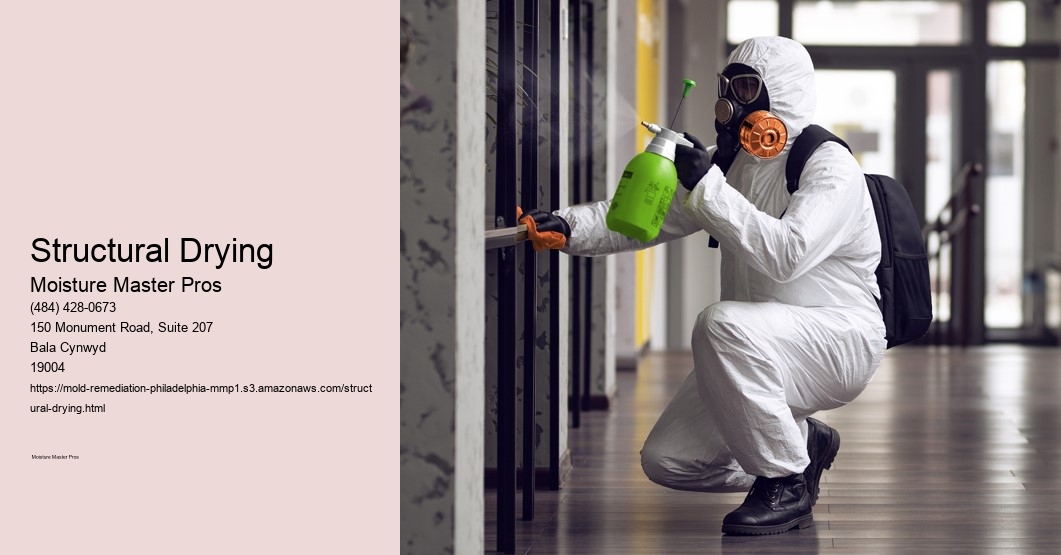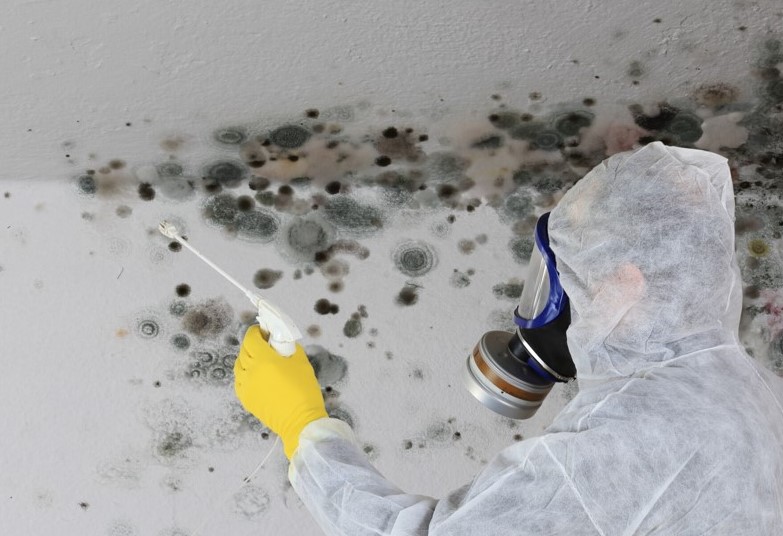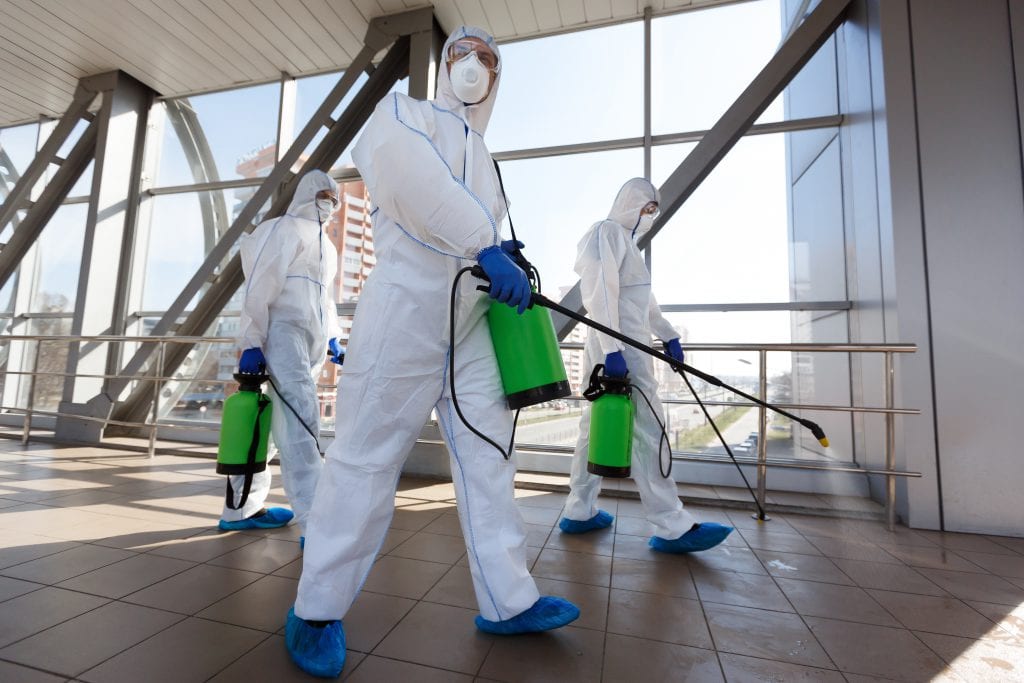

Protective measures to take when handling or cleaning mold-infested areas.
Using personal protective equipment
Recommended gear for handling mold safely.
Preventing Mold Growth
Tips for preventing mold growth
Effective strategies to minimize moisture and prevent mold.
Importance of moisture control
Keeping humidity levels low to discourage mold growth.
Proper ventilation and air circulation
Enhancing airflow to prevent stagnant, humid conditions.
Cleaning Up Small Mold Infestations
Steps to clean small mold patches
Safe methods for removing mold from surfaces.
DIY mold removal techniques
Natural and effective ways to clean mold using household items.
Cleaning products and natural remedies
Options for mold removal products that are safe and effective.
Addressing Large-Scale Mold Problems
Signs of extensive mold infestation
Indicators that mold may have spread extensively.
When to seek professional mold remediation
Conditions that warrant professional intervention.
Overview of mold remediation process
Steps involved in professional mold removal and remediation.
Understanding Mold Remediation Costs
Read about the best Structural Drying.Factors influencing mold remediation costs
Variables that affect the expense of mold removal services.
Cost-effective strategies for mold removal
Tips for managing mold removal costs efficiently.
Insurance coverage for mold damage
Insights into insurance policies and mold damage coverage.
Legal and Insurance Considerations
Insurance implications of mold damage
How insurance providers handle mold-related claims.
Legal rights and responsibilities
Homeowner responsibilities and legal recourse for mold issues.
Filing insurance claims for mold damage
Steps to take when filing a claim for mold-related damages.
Monitoring and Maintenance
Importance of regular monitoring
Why ongoing vigilance is necessary to prevent mold recurrence.
Schedule for mold prevention maintenance
Routine tasks to incorporate into home maintenance schedules.
Updating home maintenance practices
Adapting habits to reduce moisture and mold risks.
Conclusion
Summarizing the importance of proactive mold identification and prevention measures to maintain a healthy living environment.
Mold Remediation for Commercial Properties in Philadelphia
Mold, a pervasive issue in commercial properties across Philadelphia, poses significant health risks and structural concerns. Understanding the process of mold remediation is crucial for property owners and managers to maintain a safe and healthy environment for occupants. Dehumidification This comprehensive guide explores the causes of mold, the remediation process, regulatory considerations, and proactive measures to prevent mold recurrence.
Introduction to Mold Remediation
Mold, a type of fungus, thrives in damp and poorly ventilated environments.
Common Causes of Mold in Commercial Properties
Poor Ventilation
Inadequate airflow promotes moisture buildup, creating ideal conditions for mold growth in areas such as basements, attics, and poorly ventilated rooms.
Water Leaks and Moisture Buildup
Roof leaks, plumbing issues, and condensation contribute to moisture accumulation, providing a breeding ground for mold spores to flourish.
High Humidity Levels
Philadelphia's humid climate exacerbates mold growth, especially in areas with insufficient dehumidification and ventilation systems.
Health Risks Associated with Mold Exposure
Exposure to mold can lead to various health issues, particularly for individuals with respiratory conditions and allergies. Symptoms may include coughing, sneezing, eye irritation, and skin rashes. Prolonged exposure may exacerbate asthma and respiratory infections.
Identifying Mold in Commercial Properties
Visual Inspection
Inspecting for visible signs of mold growth, such as discoloration, musty odors, and water stains on walls, ceilings, and carpets.
Signs of Mold Growth
Musty odors and persistent dampness indicate hidden mold growth behind walls, under flooring, and within HVAC systems.
Mold Testing and Assessment
Professional mold testing assesses the extent of mold contamination using air and surface samples, guiding remediation efforts.
Steps in the Mold Remediation Process
Assessment and Planning
Conducting a comprehensive assessment to identify mold-affected areas and develop a remediation plan tailored to the property's needs.
Containment of Affected Areas
Implementing containment measures to prevent mold spores from spreading to unaffected areas using barriers and negative air pressure systems.
Removal of Mold-Infested Materials
Carefully removing and disposing of mold-infested materials, including drywall, insulation, and carpeting, while adhering to safety protocols.
Advanced Techniques in Mold Remediation
HEPA Filtration
Utilizing High-Efficiency Particulate Air (HEPA) filters to capture mold spores and prevent their circulation during remediation.
Negative Air Pressure Containment
Creating negative air pressure environments to contain and exhaust airborne mold spores outside the property, minimizing cross-contamination.
Use of Antimicrobial Treatments
Applying EPA-approved antimicrobial solutions to surfaces and materials to eliminate remaining mold spores and inhibit future growth.
Regulatory Requirements and Compliance
Local Philadelphia Regulations
Adhering to municipal codes and regulations governing mold remediation practices, including disposal of hazardous materials and environmental protection.
OSHA Guidelines for Workplace Safety
Ensuring compliance with Occupational Safety and Health Administration (OSHA) standards to protect workers from exposure to mold and hazardous materials.
Environmental Protection Standards
Following environmental protection guidelines to mitigate the impact of mold remediation on air and water quality in Philadelphia.
Choosing a Professional Mold Remediation Company
Experience and Expertise
Selecting a reputable mold remediation company with extensive experience in commercial properties and a proven track record of successful projects.
Licensing and Certifications
Verifying the company's licensing, certifications, and adherence to industry standards, such as the Institute of Inspection, Cleaning and Restoration Certification (IICRC).
Customer Reviews and Testimonials
Reviewing client testimonials and references to gauge the company's reliability, quality of service, and customer satisfaction.
Cost Considerations for Mold Remediation
Factors Influencing Costs
Determining factors include the extent of mold contamination, property size, accessibility, and the types of materials affected.
Budgeting for Mold Remediation Services
Obtaining detailed cost estimates and budgeting for remediation services, considering potential insurance coverage and financing options.
Preventing Future Mold Issues
Maintenance Tips for Commercial Properties
Implementing routine maintenance practices, such as prompt repairs of water leaks, regular HVAC inspections, and adequate ventilation.
Importance of Regular Inspections
Conducting periodic mold inspections and testing to detect early signs of mold growth and prevent widespread contamination.
Controlling Humidity Levels
Installing dehumidification systems and maintaining indoor humidity levels below 60% to inhibit mold growth and improve indoor air quality.
Case Studies of Successful Mold Remediation Projects
Examples from Philadelphia Commercial Properties
Highlighting case studies of successful mold remediation projects in various commercial settings across Philadelphia.
Challenges Faced and Solutions Implemented
Discussing challenges encountered during remediation processes and effective strategies employed to achieve optimal outcomes.
FAQs About Mold Remediation for Commercial Properties
Common Questions from Property Owners and Managers
Addressing frequently asked questions regarding mold remediation procedures, costs, timelines, and preventive measures.
Detailed Answers and Explanations
Providing comprehensive answers supported by industry insights and best practices in mold remediation for commercial properties.
Conclusion


In conclusion, mold remediation is a critical process for maintaining a safe and healthy environment in commercial properties throughout Philadelphia. By understanding the causes of mold growth, following regulatory guidelines, and partnering with experienced professionals, property owners can effectively mitigate mold risks and safeguard occupants' well-being. Proactive maintenance and regular inspections are essential for preventing future mold issues and ensuring long-term property sustainability.
The Science Behind Mold Growth and Effective Remediation
Introduction to Mold Growth
Mold is a type of fungus that thrives in moist environments, reproducing through tiny spores that are invisible to the naked eye. Understanding the scientific principles behind mold growth is crucial for effective remediation efforts and maintaining a healthy indoor environment.
Understanding Mold Spores
Mold spores are microscopic particles released by mature mold colonies as a means of reproduction. These spores can remain dormant for extended periods until they find suitable conditions to germinate and grow. They travel through the air and can settle on surfaces where moisture is present.
Conditions Favorable for Mold Growth
Mold requires specific conditions to flourish, including moderate temperatures (between 77°F to 86°F) and high humidity levels (above 60%). Fungal growth Areas with poor ventilation or water leaks provide ideal environments for mold to thrive, such as basements, bathrooms, and attics.
The Role of Moisture in Mold Growth
Moisture is the primary catalyst for mold growth. It initiates the germination of mold spores and provides the necessary hydration for mold colonies to develop and spread. Common sources of moisture indoors include plumbing leaks, condensation on windows, and flooding.
Common Types of Indoor Mold
Several types of mold commonly inhabit indoor spaces, including Aspergillus, Penicillium, and Stachybotrys (commonly known as black mold). Each type poses varying health risks, from mild allergies to severe respiratory issues, particularly in individuals with compromised immune systems.
The Science Behind Mold Colonization
Once mold spores settle on a suitable surface with moisture, they begin to colonize. Mold hyphae, thread-like structures, penetrate porous materials such as drywall and wood, anchoring the colony and extracting nutrients for growth. Rapid colonization can lead to visible mold patches and structural damage.
Health Effects of Mold Exposure
Exposure to mold can trigger allergic reactions and respiratory problems in susceptible individuals. Symptoms may include coughing, wheezing, nasal congestion, and skin irritation. Prolonged exposure or high concentrations of mold spores can exacerbate asthma and other respiratory conditions.
Detecting Mold in Indoor Environments
Identifying mold early is crucial for prompt remediation. Signs of mold include musty odors, visible discoloration on walls or ceilings, and increased allergic reactions among occupants. Professional mold inspections using specialized equipment can accurately detect hidden mold growth.
Steps in Effective Mold Remediation
Successful mold remediation begins with a thorough assessment of the extent and type of mold present. This involves inspecting affected areas, conducting mold testing to determine species and concentration, and devising a remediation plan tailored to the specific conditions.
Techniques and Tools for Mold Removal
Various techniques are employed for mold removal, depending on the severity of contamination. Methods include scrubbing affected surfaces with antimicrobial agents, using HEPA vacuums to capture mold spores, and employing negative air pressure to prevent cross-contamination.
Preventive Measures to Avoid Mold Recurrence
Preventing mold growth involves controlling indoor humidity levels below 60%, using exhaust fans in kitchens and bathrooms, and promptly repairing leaks or water damage. Proper ventilation and regular maintenance of HVAC systems can inhibit mold proliferation.
Environmental and Health Regulations
Mold remediation must adhere to environmental regulations and health standards to ensure safe practices. Improper handling of mold removal can lead to legal repercussions and health hazards for occupants. Compliance with local guidelines and industry protocols is essential.
Benefits of Professional Mold Remediation
Engaging certified mold remediation professionals ensures thorough and safe removal of mold, minimizing health risks and preventing recurrence.
Educational Resources for Homeowners
Empowering homeowners with knowledge about mold prevention and remediation fosters a proactive approach to indoor air quality. Resources include educational websites, government health advisories, and recommendations from certified mold inspectors.
Conclusion
Understanding the science behind mold growth equips homeowners and property managers with essential knowledge to mitigate risks effectively. By implementing preventive measures, conducting regular inspections, and promptly addressing moisture issues, individuals can create healthier indoor environments free from mold contamination.
Top Mold Remediation Techniques and Technologies
Mold growth in homes and buildings can pose significant health risks and structural concerns if not addressed promptly and effectively. In this comprehensive guide, we explore the top mold remediation techniques and cutting-edge technologies used to combat this pervasive issue.
Introduction to Mold Remediation
Mold remediation is the process of removing mold and preventing its recurrence through systematic techniques and advanced technologies. Effective remediation not only restores indoor air quality but also safeguards the health of occupants.
Understanding Mold Growth
Mold thrives in environments with excess moisture and organic materials. Common types include Aspergillus, Penicillium, and Stachybotrys (black mold), each posing unique health risks.
Health Risks Associated with Mold
Exposure to mold spores can lead to respiratory issues, allergies, and exacerbate asthma symptoms. Infants, elderly individuals, and those with compromised immune systems are particularly vulnerable.
Initial Assessment and Inspection
Thorough assessment and inspection are crucial for identifying mold-infested areas. Tools such as moisture meters and thermal imaging cameras aid in pinpointing moisture sources and assessing mold growth extent.
Containment Strategies
Containment prevents mold spores from spreading to unaffected areas during remediation. Physical barriers and negative air pressure systems are commonly used to isolate contaminated spaces.
Mold Removal Techniques

During mold remediation, Moisture Master Pros will: Inspect and Assess: Identify the extent of mold growth. Contain: Seal off the affected area to prevent spore spread. Filter Air: Use air filtration systems to remove mold spores. Remove Mold: Clean and remove mold-infested materials. Restore: Repair and replace damaged areas to restore your home.